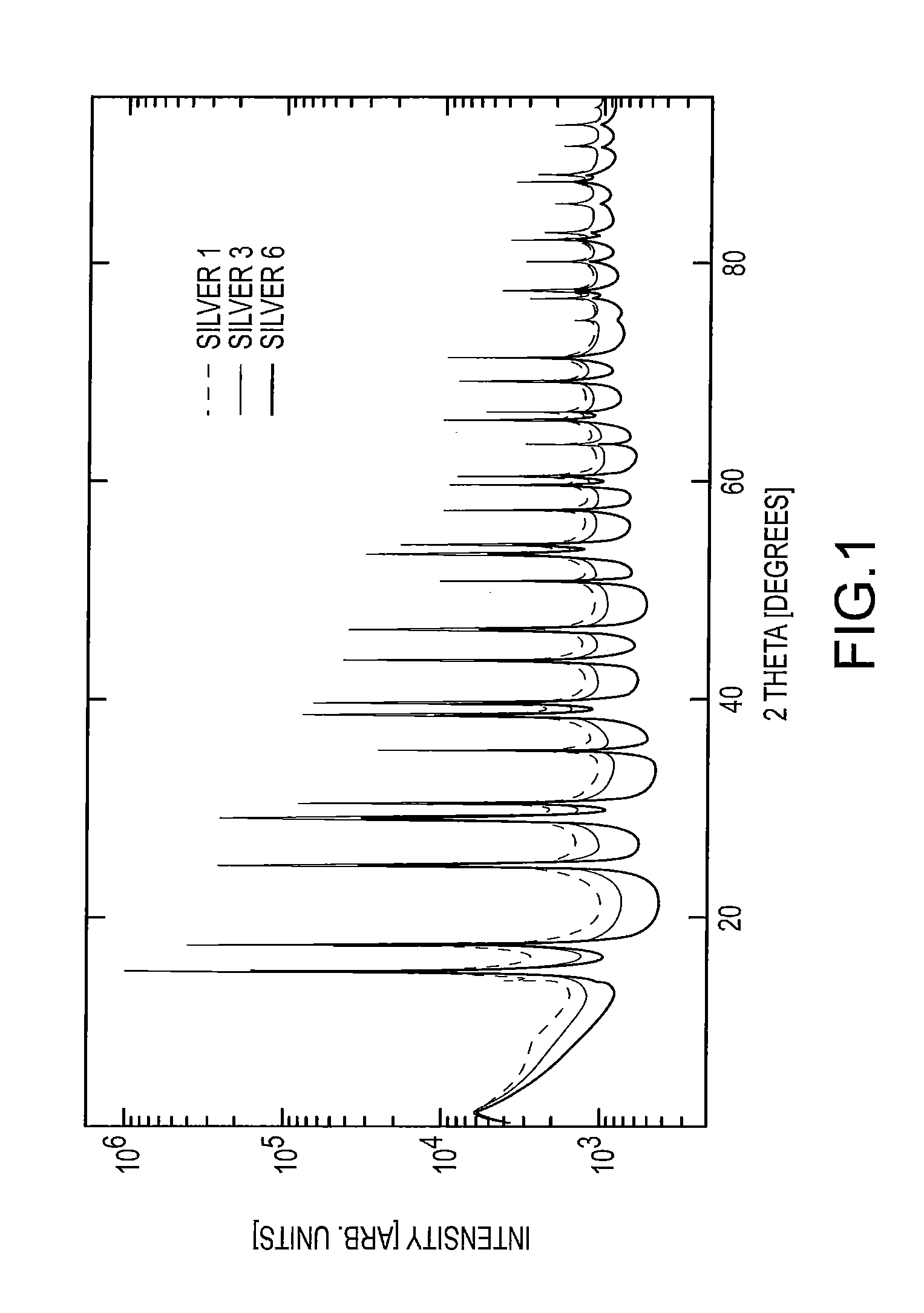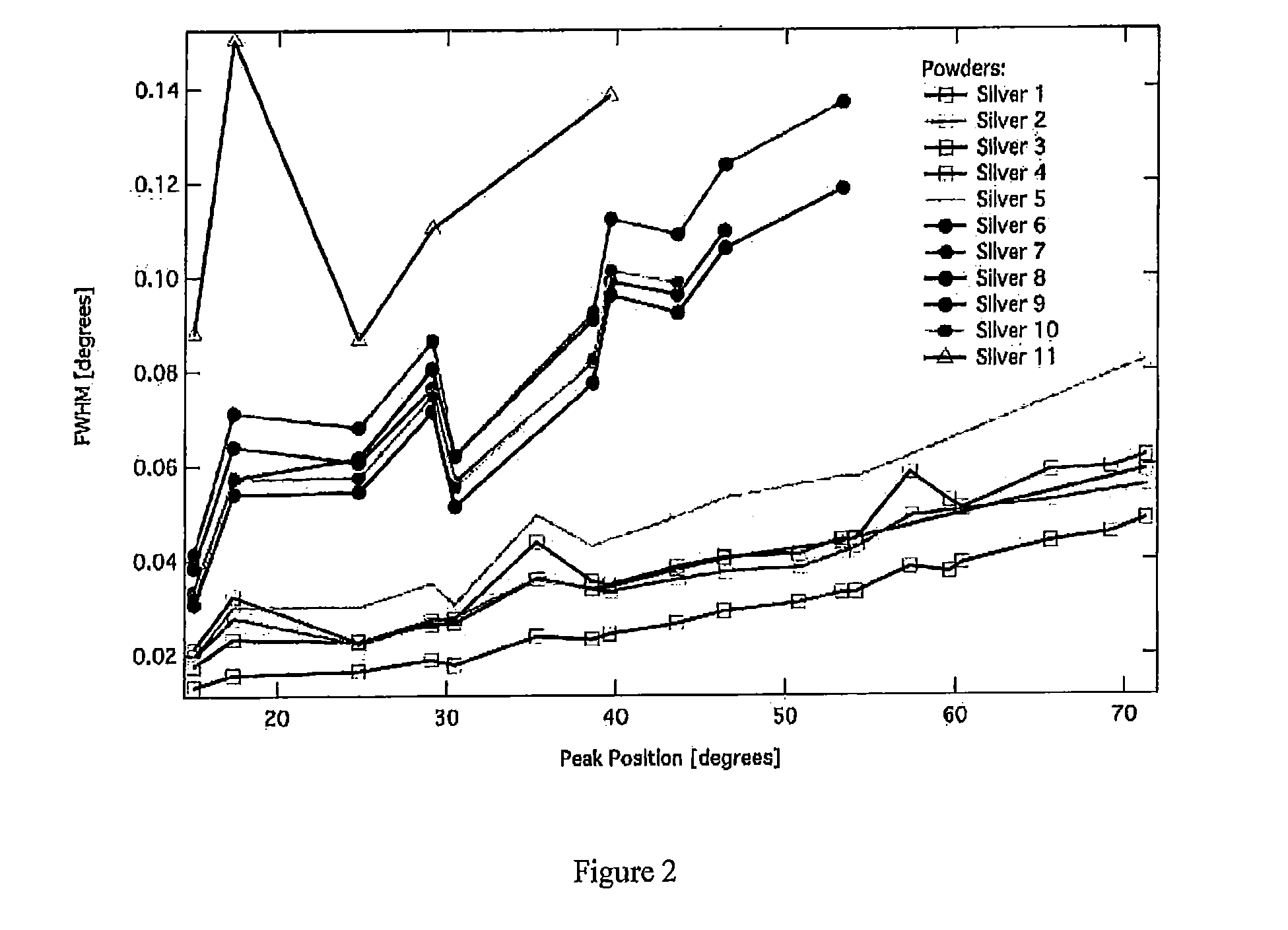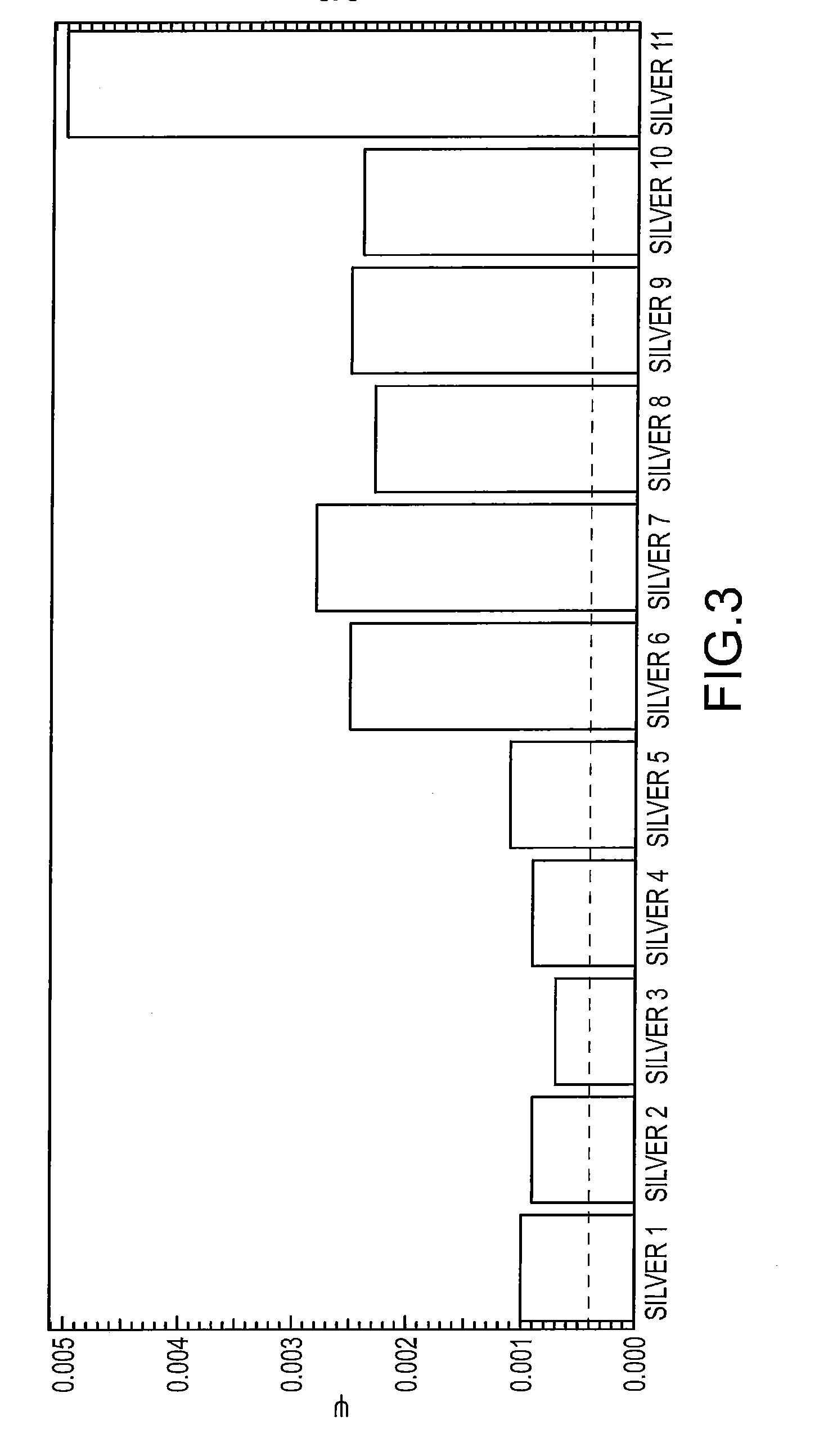Sinterable metal particles and the use thereof in electronics applications
- Summary
- Abstract
- Description
- Claims
- Application Information
AI Technical Summary
Benefits of technology
Problems solved by technology
Method used
Image
Examples
example 1
[0083]Table 1 identifies several different silver particulate materials which were employed herein. All silver materials are sub-micron to micron sized silvers, except the final entry, which is a nano-sized silver. The same carrier was employed for each of the silvers. The key performance properties are adhesion (DSS and TLSS) and bulk conductivity (as indicated by the volume resistivity (Vr)), see Table 1.
TABLE 1Ag properties determinedby XRD measurementsAg sintering -Ag sintering -AgIntensityno pressure - Ag DBCno pressure - Cu DBCDBC200 / IntensityDDS -DDS -DDS -DSS -TLSS -Vr -silverΨ111Crystallinitykgkg / mm2kgkg / mm2MPaOhm / cmSilver 10.00100.48082% 5.80.65 6.60.734.61.6E−05Silver 20.00090.41997% 4.90.54 3.80.423.9Silver 30.00070.51699%69.87.7634.73.8616.04.1E−06Silver 40.00090.727no wettingno wettingno wettingno wetting13.4DBCDBCDBCDBCSilver 50.00110.574no wettingno wettingno wettingno wetting13.3DBCDBCDBCDBCSilver 60.00250.51423.72.6328.03.1111.75.1E−06Silver 70.00280.50039.94.4424....
example 2
Quantification of Amorphous / Crystalline Fraction of Samples
[0095]Quantification of crystallinity can be performed using a Rietveld refinement method of X-ray diffraction data of a specimen, in which the sample to be studied is mixed with a 100% crystalline compound in a known relation. For the purposes of this invention, a defined amount of silver samples were mixed with fully crystalline SiO2 (the weight relation for both is near to 1:1). Then the X-ray diffraction pattern was measured and Rietveld analysis was performed according to methods known to those skilled in the art. From the known amount of silver and SiO2, and the obtained silver weight fraction, the amount (and fraction) of crystalline silver was obtained. Other variations of the Rietveld refinement method, as well as different methods of determining crystalline fraction can also be used to obtain the degree of crystallinity used for the purpose of this invention.
PUM
 Login to View More
Login to View More Abstract
Description
Claims
Application Information
 Login to View More
Login to View More - R&D
- Intellectual Property
- Life Sciences
- Materials
- Tech Scout
- Unparalleled Data Quality
- Higher Quality Content
- 60% Fewer Hallucinations
Browse by: Latest US Patents, China's latest patents, Technical Efficacy Thesaurus, Application Domain, Technology Topic, Popular Technical Reports.
© 2025 PatSnap. All rights reserved.Legal|Privacy policy|Modern Slavery Act Transparency Statement|Sitemap|About US| Contact US: help@patsnap.com



